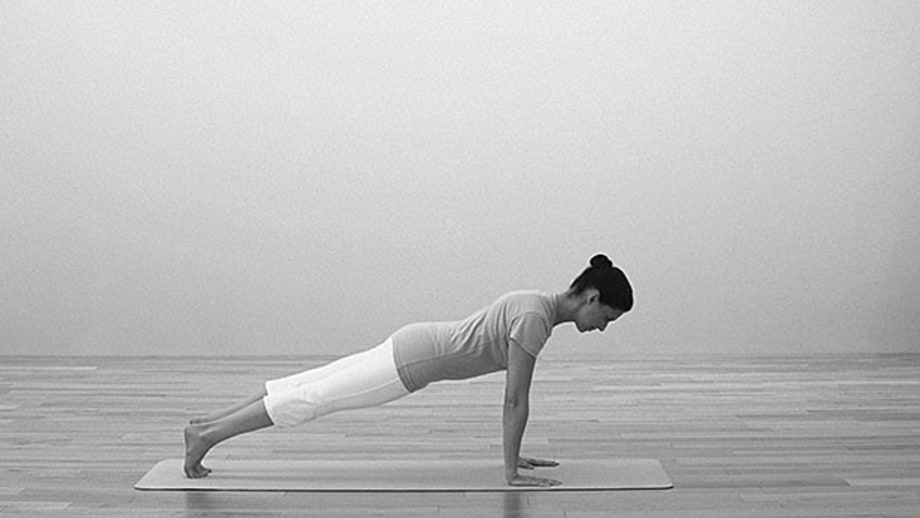Do you bend over to touch your toes first thing in your workout in the morning? We are here to tell you, you are putting your muscles at risk, like many others who do not have a great deal of information about the science of stretching. Stretching when done right, as is done during the practice of yoga, can help reduce anxiety, muscle tension, regulate blood pressure, better mobility, give you healthier muscles as well as lower blood pressure and improve rate of breathing. If you are someone who is interested or curious about having deeper meditations, then it serves you well to know how best to stretch, so you can slip into good deep meditative experience after the practices. Here are the Dos and Donts of stretching that you may like to keep in mind before your next work out!
Like any admirable skill or show of dexterity, our muscles also need some practice in order to stay in shape and at their best game. Our sedentary lifestyle does not allow for this. The result is underneath the skin, muscle fibers start cross linking with fibers that run parallel and thus muscles are perpetually tightened or stiff. Yogic stretching increases the production of tissue lubricants which helps keep muscles healthy and less stiff.
1) Stretching does not improve flexibility but increases elasticity of connective tissues
Unlike what we have been taught to believe all through our growing years in the PE classes, stretching does nothing to increase the flexibility of the muscles per say. The focus of stretching asanas in Yoga unlike in any other form of work out is, to increase the elasticity of the connective tissues called the Muscle fascia that account for almost 41 percent of the muscle’s resistance. Yoga helps free up individual muscle fibers on cellular level that were cross linked and restructure them to give you core muscle strength, over a longer and steady period of practice. Yoga allows you to experience the full range of motion that the joint muscles are capable of.
2) To each his own-Right balance of flexibility
While trying to stretch, if you are looking to gain flexibility, make sure you do not over-do it. Each bodies’ muscle requirement for flexibility varies. Too much muscle flexibility can also do you harm as that would be a sign of muscle weakness. If your muscles are too tight, it may have to do with chronic pain, injuries or posture problems. In which case, you need to stretch. It is important to know your body. The amount of flexibility in different muscles of the body also varies based on the sports or the form of physical activity you engage in. Soccer player’s need for flexibility in his calf muscles varies from the need for flexibility in a tennis player’s shoulders.
3) Warm up is not the same as stretching
People often mix up warm ups with stretching. While the former is ideal to start a work out with, the later is not.
A)Avoid static stretching right at the beginning of your work out. Static stretch is a muscle stretch to its end or highest position and holding it there for about half a minute. Done as a warm up, static stretching can actually back fire when your muscles are still cold.
B)Instead heat up your body with a dynamic warm up. Warm up exercises involve increasing the temperature of your body. Skip, jog, jump or do air squats. Dynamic warm up aims to start off slowly with a replication of your choice of sport and then increasing the intensity of the movement.
4) Do not stretch before, for example, an intense track and field activity. Stretching right before it may actually hamper your performance affecting hamstrings if you are into competitive sports, according to some research.
5) Static stretching is the best cool down activity.
6) Make sure both sides of the body are equally stretched. It is important that you pay attention to muscles on both the sides even while doing static stretches or for that matter any type of stretching. If muscles are not equally flexible, to whatever extent, could lead to injuries.
7) Experts recommend that you refrain from bouncing while stretching as the two do not really work well together. Bouncing while stretching could hurt your muscles and cause muscle tightness.
8) Breathe normally into the stretch as you hold the stretch. Do not hold your breath while stretching. Each stretch can be held for 30 to 60 seconds.
9) Know your limits of pain and tension. The simple rule is, if it is hurting then it is a sign you have pushed too far. Feel the slight expansion or tension but it should not pain. Reduce the movement to a point where it does not hurt anymore.
10) Do It Regularly. You stand to lose any potential benefits of stretching as the easing of muscle tension and stiffness, if you do not practice it regularly. According to fitness experts, stretching practices can last for 10-20 minutes, assuming each posture is held for 20 to 30 seconds.
11) Know that stretching will not prevent injuries from happening. Warm ups will. In fact if you have an injury, stretching may just add to it.
12) Three Stretching Asanas or postures that are actually good for healing your neck pain-
A)Shishuasana or Child pose
Benefits-
-Alleviates neck pain
-Alleviates back ache
-Calms the central nervous system
-Stretches hips, thighs, and ankles.
 B) Marjariasana or cat pose
B) Marjariasana or cat pose
-Massages the back
-makes the spine flexible
-improves digestion
 C) Natarajasana or Lord of the Dance pose
C) Natarajasana or Lord of the Dance pose
-Makes muscles flexible
-calms your mind and brings instant relaxation in the body and mind.
13. Yoga Nidra- After the poses and stretches, lie down and relax with Yoga Nidra or Yogic sleep. The Yoga Nidra is known to give deep rest equivalent to four hours of sleep. Though we do not suggest, you skip your beauty sleep. Yoga Nidra can give you rest equal to a couple of hours of sleep. Listen to this soothing guided Yoga Nidra and catch up on some good quality rest.
Image Courtesy: www.theyogahouseny.com










